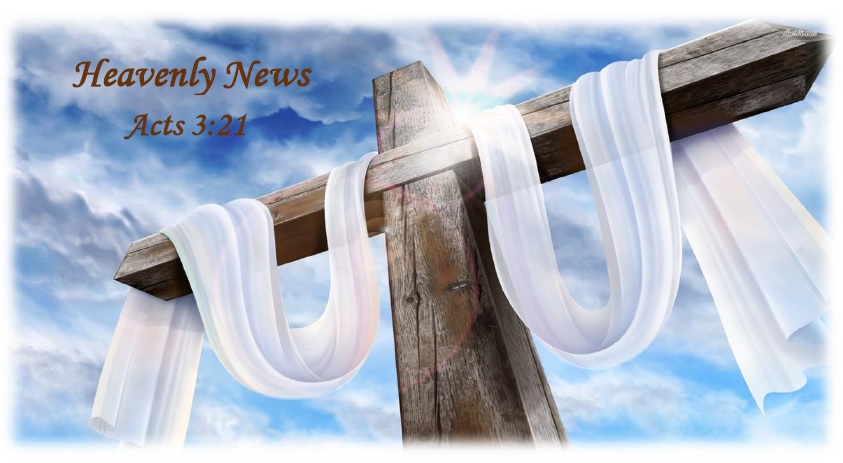THE TOWER OF BABEL AND THE RELIGION OF NIMROD (Part 1)
Kenute P. Curry
The story of the Tower of Babel begins in Genesis, chapter eleven, but to fully understand how it ties in with the religion of Nimrod, we must go back a chapter to Genesis 10:6-12 which states:
The sons of Ham were Cush, Mizraim, Put, and Canaan. The sons of Cush were Seba, Havilah, Sabtah, Raamah, and Sabtechah; and the sons of Raamah were Sheba and Dedan.
Cush begot Nimrod; he began to be a mighty one on the earth. He was a mighty hunter before the LORD; therefore it is said, “Like Nimrod the mighty hunter before the LORD.” And the beginning of his kingdom was Babel, Erech, Accad, and Calneh, in the land of Shinar. From that land he went to Assyria and built Nineveh, Rehoboth Ir, Calah, and Resen between Nineveh and Calah (that is the principal city).
Cush begot Nimrod; he began to be a mighty one on the earth. He was a mighty hunter before the LORD; therefore it is said, “Like Nimrod the mighty hunter before the LORD.” And the beginning of his kingdom was Babel, Erech, Accad, and Calneh, in the land of Shinar. From that land he went to Assyria and built Nineveh, Rehoboth Ir, Calah, and Resen between Nineveh and Calah (that is the principal city).
After the flood, Noah had a talented, but evil, great grandson named Nimrod who rebelled greatly against God. In this passage of scripture, it is stated that Nimrod is a mighty hunter before the Lord or a tyrannical hunter in direct opposition to the LORD. The meaning of the name Nimrod comes from the Hebrew verb “marad”, meaning “rebel”, and fits him well, as he is in rebellion against the Creator, the one true God. After the flood, as civilizations were restored, he became very prominent. This passage also tells us that the beginning of his kingdom was Babel, Erech, Accad and Calneh in the land of Shinar, which is Southern Mesopotamia, extending almost to the Persian Gulf. Out of that land he went forth into Assyria and built Nineveh, Rehoboth-Ir, Calah and Resen, the latter being built between Nineveh and Calah. It has been conjectured that these four cities mentioned in Genesis 10:11 were afterwards all united into one and called Nineveh. In Isaiah 13:10, the rendering of the Hebrew word “Kesil” is given, which means “fool”. The Kesil constellation is also referred to in Job 9:9, 38:31 and Amos 5:8, which represented Nimrod, the symbol of folly and impiety. Some appear to have conceived of this constellation under the figure of a wicked, sinful giant bound upon the sky; the giant according to tradition, being Nimrod, the type of the folly that is in direct opposition against God.
The cities that Nimrod built and organized as stated in Genesis 10:10-12 were cities of unimaginable practices and perversion. When Nimrod died, the Babylonian mystery religion which he created and established continued on. After his death, his wife, Queen Semiramis made him out to be divine and called him the Sun-God. He later became known as Baal, meaning lord (Judges 2:11, 13, 10:10, 1 Kings 18:18),Balaam, the plural of Baal (Numbers 22:41), Bel, the Aramaic form of Baal (Isaiah 46:1, Jeremiah 50:2),Molech, the national god of the Ammonites (Leviticus 18:21, 20:2), etc. His adulterous and idolatrous wife, Queen Semiramis, gave birth to an illegitimate son which she named Tammuz, and claimed that he was Nimrod reborn. She also claimed that he was supernaturally conceived (no human father) and that he was the promised seed (savior) by God in Genesis 3:15. The child was worshipped, but the mother, Queen Semiramis, was worshipped as much or more than the son. In Ezekiel 8:14, the Sovereign God brings Ezekiel to the door of the gate of the LORD’s house where he sees women sitting there weeping over the god Tammuz. Yahweh (YHWH) tells Ezekiel that this is a great and detestable thing. Nimrod was deified as the god of the sun and the father of creation while his wife Semiramis became the goddess of the moon and fertility.
The terrible false Babylonian mystery religion developed with its sun and moon worship, priests, astrology, demonic worship, worship of stars associated with their gods, idolatry, mysterious rites, human sacrifice and more. The practices that went on in this religion were abominable and detestable in the eyes of Jehovah God.
Scripture quotations are from the New King James Version of the Bible, © 1979, 1980, 1982, 1990, Thomas Nelson, Inc., Publishers.
©2006 Kenute P. Curry. All rights reserved.


No comments:
Post a Comment